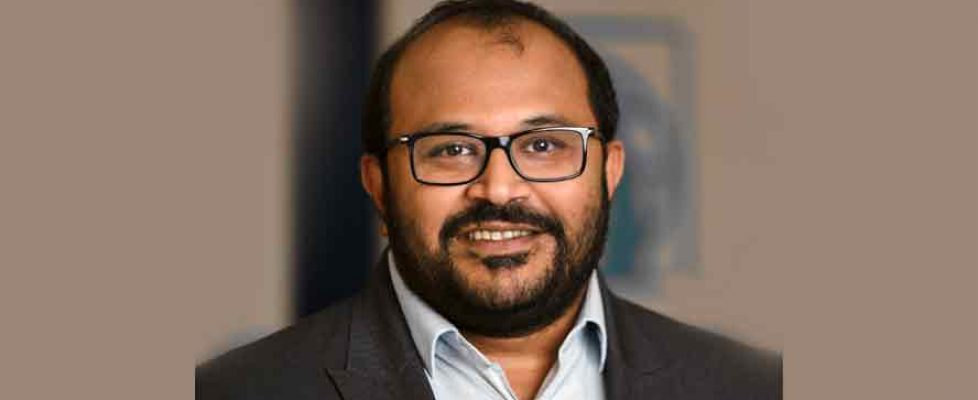How remote patient monitoring can aid in the fight against COVID
In the context of the COVID-19 public health emergency, leveraging patient monitoring technology to eliminate unnecessary patient contact and ease the burden on hospitals, other health care facilities, and health care professionals has proven to be a boon. Abhishek Dubewar, Sr Director Cardiovascular Group, Medtronic Indian Subcontinentexplains more on advantages of remote monitoring in times of COVID in an interview with Raelene Kambli
How much does remote monitoring aid in the fight against COVID?
If a patient has an implanted heart device like a pacemaker, an implantable cardioverter defibrillator (ICD) or a cardiac resynchronisation therapy (CRT), ongoing care doesn’t end at the implant. It’s important to maintain a connection with the doctor or clinic for the life of the device. One of the best ways to do this is through remote monitoring.
Remote monitoring of cardiac devices is now the standard of care as it lets the heart device to communicate securely and directly with the doctor or clinic using a small monitor, potentially reducing the number of times a patient has to travel to a clinic for an implanted heart device check.
Studies show that remote monitoring:
- Helps doctors detect abnormal heart rhythms and issues with heart devices faster 1,2
- Reduces hospitalisations and emergency room visits 3,4
- Increases Quality of Life 4
- Provides patients with a sense of security and peace of mind 5-7
During the ongoing COVID-19 crisis, remote monitoring is a boon for heart patients. Especially, for older patients as they are more likely to develop more severe coronavirus symptoms.[2] With the reduced frequency of hospital visits, and reduced time spent waiting in OPDs, it ensures less exposure to diseases for vulnerable patients and healthcare workers.
COVID-19 requires scaled interactions with populations in near real-time. How do you think remote monitoring facilitates these interactions efficiently?
The end goal is to improve the quality of patient’s life, improve outcomes and provide peace of mind, as well. With the rapid spread of COVID-19, we know that alternative approaches to screening, disease monitoring, and patient education are the need of the hour to reduce any exposure to the virus and ease the burden on health care providers and facilities. By connecting patients and physicians, remote cardiac monitoring provides many clinical and economic benefits in real-time apart from the benefits stated earlier. These include faster time to treatment if the physician detects a problem with the pacemaker based on the transmitted data;i reduced time spent in the hospital if the physician quickly detects and treats a medical problem;iv,v and a potential increase in patient survival rates.vi,vii,viii
Medtronic’s existing cardiac monitoring platform is a classic example of meaningful innovation at the therapy level. It can be seamlessly integrated with smartphones and tablets, thus enabling patients to securely transmit data from their pacemakers to their doctors via the technology that they use every day.
Share some examples for effective remote monitoring and how it helps providers and patients both?
Currently, Medtronic has over two million cardiac patients globally on remote monitoring, and all these patients are receiving the benefit of this therapy every day including during this pandemic. In India, we have over 1100 cardiac patients on remote monitoring across the country. During the COVID-19 pandemic, we have ramped up our efforts in India to make remote monitoring tools accessible to physicians and patients. Most clinics will receive and review the patient data according to a schedule. They can also set up alerts on most devices to notify them if there’s a concern.
What role does telemedicine play in remote monitoring and how is telemedicine ushering new opportunities for the same?
Telemedicine is use of information and communication technologies for exchange of valid information for diagnosis, prevention of diseases, whereas in remote monitoring subject to the consent from the patient, the physician can monitor patient’s conditions post implantation of a heart device and manage them remotely.
Telemedicine guidelines have recently been updated in India. Earlier, for any intervention or medical management on basis of remote transmissions, patients would have to consult with physicians in person in the hospital. The doctor to patient ratio in India is lower than WHO’s prescribed norm of one doctor for 1,000 people.8 And the concentration is more in urban areas than in smaller towns or rural areas where 70 per cent of the population resides. In such a scenario, use of telemedicine and remote monitoring becomes critical and has a huge potential in our country as it would be beneficial to both physicians and patients. This innovation will serve as the foundation for future advances using smart technology to support cardiac patients.
What should healthcare organisations do to operationalise remote monitoring during this pandemic?
Around the world, patients are seeking shorter hospital stay, quicker recovery, cost efficiency and improved quality of life post-procedure. Healthcare providers and health systems are facing an unprecedented challenge: provide individualised care to patients while managing ever-increasing demands on resources. With the advent of the digital era and the use of smart technology, remote monitoring can be leveraged in the management of chronic conditions to post-operative care to recovery. In the past decade, healthcare in India has witnessed a new wave of opportunity and there is a greater emphasis on improving access, evaluating newer schemes and reinventing existing delivery models to bring healthcare closer to the patient. During the ongoing COVID-19 pandemic, there is a reduction inpatient visits to the hospital along with the need to reduce exposure to the virus. In such scenario, remote monitoring can prove advantageous. It can provide tailored information to patients, can be scaled to a large patient population with a reduction in the overall cost of care. The opportunity is huge but there is also a need to raise awareness about the tool and increase its uptake.

